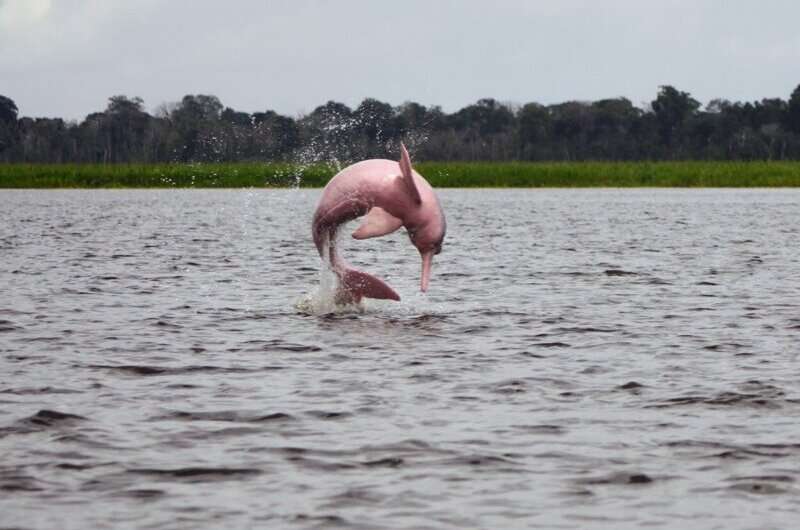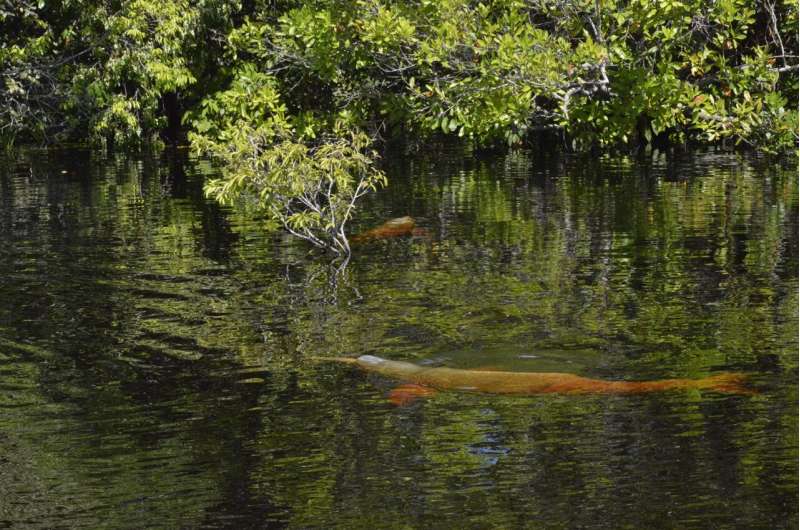This article has been reviewed according to Science X's editorial process and policies. Editors have highlighted the following attributes while ensuring the content's credibility:
fact-checked
peer-reviewed publication
trusted source
proofread
Listening in on endangered Amazon River dolphins

Monitoring echolocation clicks could be used to track the movements of two endangered freshwater dolphin species that inhabit inaccessible parts of the Amazon Basin—the boto (or pink river dolphin) and the tucuxi—and their interactions with people, reports a paper published in Scientific Reports. A trial of the approach reveals new insights into dolphin movements and behavior, which could contribute to conservation strategies for these species.
The boto (Inia geoffrensis) and the tucuxi (Sotalia fluviatilis) are both threatened by human activity such conflict with fishermen and pressure from agriculture, mining, and dam construction. During the wet season (April to August), both species of dolphin move into the floodplain forests (known as the várzea) bordering river channels in pursuit of freshwater fish. However, the floodplain and vegetation make it extremely challenging to survey dolphins using boats or drones
Florence Erbs, Michel André, and colleagues used five hydrophones submerged to depths of between three and five meters to survey 800 square kilometers of the Mamirauá Sustainable Development Reserve in Brazil where the Solimões and Japurá rivers meet.
Recordings were taken from river channels and confluence bays, floodplain lakes, and flooded forest at different times during the wet and dry seasons between June 2019 and September 2020. The authors used deep learning algorithms—known as a convolutional neural network—and sound data collected manually from boat surveys to automatically classify detected sounds as echolocation clicks from dolphins, boat engine noises, or rain with an accuracy of 95, 92, and 98% respectively.

The researchers detected that the presence of dolphins increased from 10% of the day to 70% in the bay and river channel as water levels rose between November and January. They suggest that the dolphins were using these waterways to enter the floodplain. Boto adolescents and females with calves spent more time in the floodplains than males, either due to rich abundance of prey or as shelter against the males' aggressive behavior according to the authors.
The authors call for this methodology to be used to better understand habitat preferences and requirements of Amazon River dolphins.
More information: Michel André, Towards automated long-term acoustic monitoring of endangered river dolphins: a case study in the Brazilian Amazon floodplains, Scientific Reports (2023). DOI: 10.1038/s41598-023-36518-1. www.nature.com/articles/s41598-023-36518-1
Journal information: Scientific Reports
Provided by Nature Publishing Group


















